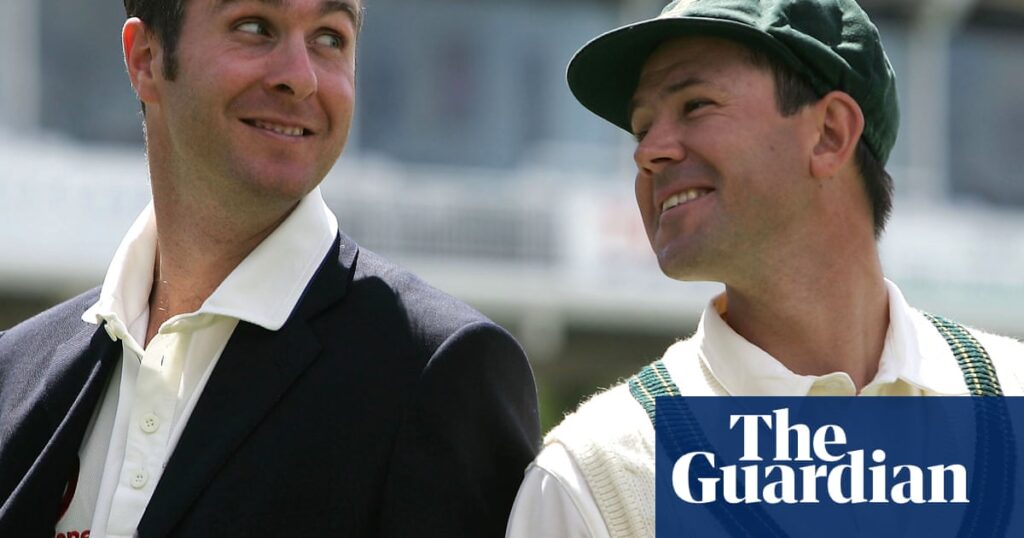
This, dear reader, is the 1,126th edition of The Spin. For the past 23 years it has been a weekly source of news, views and automated data about the unread message count in the deleted items folder. As such it is hard to find new journalistic frontiers. But, in the face of some molten competition, this week’s Spin stands alone as the nerdiest, the most anal, the one grounded furthest from reality.
We say this not to boast, only to flag that it may not be for everyone, and that we feel for those unfortunates whose neurological disposition means they have precisely no interest in imagining what a World Test Championship final might have looked like in May 1989.
Yep, with South Africa facing Australia in an actual World Test Championship decider next month, we’ve calculated what the finals would have been had a forward-thinking International Cricket Council introduced the concept in the 20th century. We stuck as closely as possible to the current regulations, which means one-off Tests don’t count, each cycle begins with the first Test of an English summer and teams need to reach a certain level of performance before they join the imaginary points table.
In the Editor’s Notes for this year’s Wisden Almanack, Lawrence Booth – AKA Original Spin – described the WTC as “a shambles masquerading as a showpiece”. If you’re reading, Lawrence, we hope you’ll agree there’s no masquerade here.
We went back as far as 1973-75, primarily for two reasons. In our head that’s where modern cricket begins, with Dennis Lillee and Jeff Thomson trying to knock St George off his ’orse in 1974-75. And 50 years of counterfactuals feels like quite enough for now.
Many of the findings (!) are as you’d expect. West Indies would have been in every final from 1979 to 1993, Australia from 1997 to 2009. (We’ll get to 1995.) England would have made only three: 1979, AKA the Packer Years, 2005 and 2011. And they would have finished bottom twice: not in 1999, when they were unofficially the worst team in the world, but 1981 (back-to-back series against West Indies will do that to you) and 1989. In that cycle England played 18 Tests, winning only one, and even that wouldn’t have counted as it was a one-off against Sri Lanka.

The 2005 final would have been played at the start of that mind-altering summer, probably without Kevin Pietersen as it was before the astonishing innings at Bristol that made the selectors forget everything they thought they knew. Whatever the result, a WTC final would have subtly altered the context of the epochal Ashes series that followed.
Australia became unofficial world champions a decade earlier when they ended West Indies’ 15-year unbeaten run in an even more epochal series. Yet the WTC final that year – the same month, in fact, because the series ended at the start of May – would have been between Pakistan and India. The reason was one of the WTC’s biggest problems, an unequal schedule. India played only three series, two against a relatively weak Sri Lanka, and three of Pakistan’s five series were against Sri Lanka and Zimbabwe.
West Indies v Australia would have been the final in the two cycles prior to 1995, with the 1991 final taking place almost immediately after an extremely fractious series in the Caribbean that West Indies won 2-1. Imaginary popcorn please!
It’s no surprise that Australia are the most dominant team overall; they would have appeared in 15 finals from 1975-2025. No other side has reached double figures. The West Indies team of 1983-85, whose cycle included a 3-0 win in India, a 5-0 in England and a 6-1 aggregate evisceration of Australia, are the only team whose percentage of available points (75) was more than double any of the other teams.

West Indies’ opponents in their decade of dominance would have been India (1981), New Zealand (1987) and Pakistan (1983, 1985, 1989). Imran Khan’s side have a strong case for being the most underrated team in cricket history. Their win percentage is too low for them to be among the very best – in the 1987-89 cycle, for example, they drew 11 out of 16 – but they lost only two Test series in an eight-year period and consistently matched the West Indies at a time when most other teams were being smashed to smithereens. The three 1-1 draws played between 1986 and 1990 are the subject of the best cricket book never written.
Pakistan’s final against West Indies in 1989 is the one that stirred the most excitement in our inner child. A year on from an epic draw in the Caribbean, 18 months before another in Pakistan, except this time a draw wasn’t on the table. We spent an hour working out what the teams would have been, specifically whether Pakistan’s last pick would have been Shahid Saeed, Ijaz Ahmed, Mudassar Nazar, Saleem Jaffar or Naved Anjum, and what the implications were for the role of utility man Aamer Malik.





